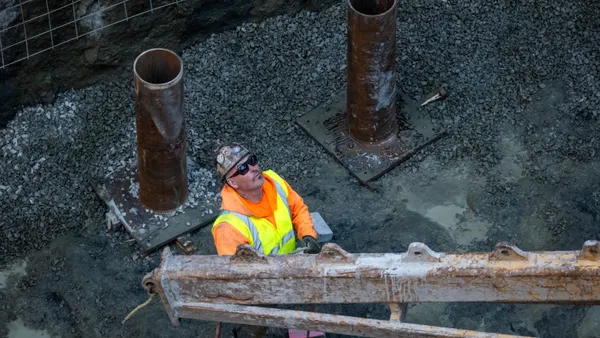Dive Brief:
-
The top 10 U.S. residential real estate markets trend heavily to the West and should expect average price increases of 5.8% compared to 3.9% forecast nationally and sales gains of 6.3% compared to 1.9% nationally, according to Realtor.com's forecast of the leading housing markets for 2017.
-
Although a wave of new construction is helping to ease some of the supply shortages in these booming markets—which include Los Angeles, Phoenix, Boston, and Jacksonville, FL—it is not going to be enough to keep pace with growing demand.
- Cities in the Western U.S. account for six of the top 10 metros expected to lead nationally in home prices and sales in 2017: Tucson; AZ; Phoenix-Mesa-Scottsdale, AZ; Riverside-Ontario-San Bernardino, CA; Los Angeles-Long Beach-Anaheim, CA; Sacramento-Roseville-Arden-Arcade, CA; and Portland-Vancouver-Hillsboro, OR-WA.
Dive Insight:
Despite forecasts of a slight slowdown in the housing market next year as inventory shortages ease, price increases taper and an unanticipated bump in mortgage rates from historical lows puts some would-be buyers off, Realtor.com’s latest forecast suggests that certain parts of the country will stay hot.
Low unemployment levels and strong job growth are bringing people to these markets — and keeping them there. In its 2017 housing market forecast released earlier this week, Realtor.com noted that the West region should continue to see the highest price and sales gains nationally, with Los Angeles; Sacramento, CA; Riverside, CA; Tucson, AZ; and Portland, OR, leading the way.
Millennials have a big say in the duration and intensity of this trend. Having traditionally gravitated towards coastal metros primarily for the job and earning potential there, the latest data suggests they are putting down roots inland in greater numbers than before. In its 2017 forecast, Realtor.com cited the Midwestern cities of Madison, WI; Columbus, OH; Omaha, NE; Des Moines, IA; and Minneapolis as active markets in a region where millennials make up 42% of homebuyers compared to 38% nationally.
Developers are responding to the pickup in younger, first-time homebuyers with amenity-rich master-planned communities and home plans with smaller footprints but more energy-efficiency features.
For more housing news, sign up for our daily residential construction newsletter.












